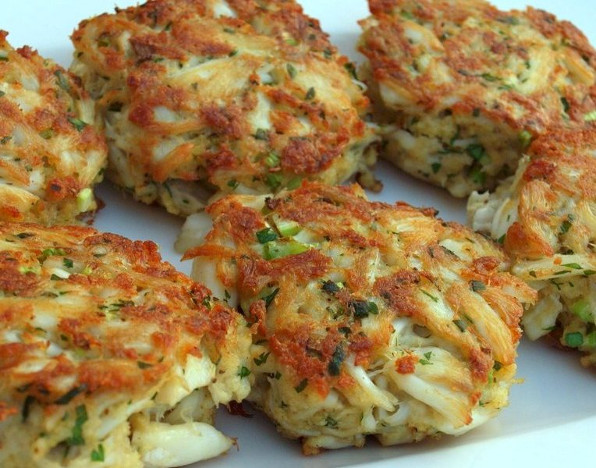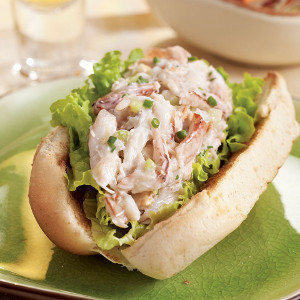It sounds a little harsh when put in those words, but that’s the form in which most of us in North America know the Japanese all-purpose seafood ingredient, Surimi. It’s also the fastest-growing seafood product in North America, though you might not recognise it immediately under some of its many names…
 ‘Crab’ Cakes: One of the most popular uses for Surimi in Western cuisine…
‘Crab’ Cakes: One of the most popular uses for Surimi in Western cuisine…
When you go to that Asian Buffet restaurant you love so much, and dive into the tray of ‘Breaded Fried Scallops’, you’re probably getting Surimi made to mimic Scallops. And those ‘Crab Cakes’ a little further down the steam table are probably Surimi, too. The more creditable restos will tell you that on the sign over the tray, either in brackets or small print. Mine does. But knowing my ‘Scallops’ are what you might call ‘fake’ doesn’t diminish my dining experience one bit.
The Surimi tradition goes back centuries in Eastern Asia and has its deepest roots in Japan. Unlike North America and Europe, where most of the Surimi consumed is sold in forms mimicking other, more expensive seafood products, Surimi is traditionally eaten as ‘itself’ in Asia, without the stigma of ‘fake’ anything attached to it.
What is Surimi?
Surimi can be many things, depending on what it’s made from and how you want it to look and taste. Think Crab/Lobster Rolls, Seafood Salad, Crab Cakes…
One thing all forms of Surimi have in common is that they’re pe-cooked. But they can be cooked again, if your recipe calls for that.
The short version of the Surimi story is, it’s a paste of white-fleshed fish with certain added ingredients to help texturize it, flavour it and colour it for use in an array of products. As I said earlier, most North Americans know Surimi as ‘Fake’ Crab Meat. Also ‘Crab Sticks’, ‘Krab’ and other inexpensive, not-really-Crab products. But it’s also used to create ersatz Lobster and other seafood dishes, including that pan-Asian favourite, Fish Balls. In fact, Surimi is also made from Pork and Beef, for processing into Meatballs in some Asian cuisines.
In Japan, Surimi has long been used to make Fish Sausages and cured seafood products.
Commercial Surimi was originally made from Alaskan Pollack, a perfectly good Fish variety that once was used to make pet food. But, as the oceans became less and less bountiful the old tradition was revived as a way of making better use of of lesser fish. Now, Pollack is also becoming scarcer, and other ‘secondary’; fish species are used along with it to fill the growing demand for Surimi products.
Between two and three million tons of fish from all parts of the globe are used annually to make Surimi. That’s 2% – 3% of world-wide seafood production. The U.S. and Japan are the leading producers of Surimi, and China is not far behind. It’s a billion-dollar industry.
So, there you have it!
Next time you cruise the often mysterious coolers and freezers of your fave Asian supermarket, you’ll recognise and appreciate a whole new realm of Surimi products you never knew existed before!
~ Maggie J.

